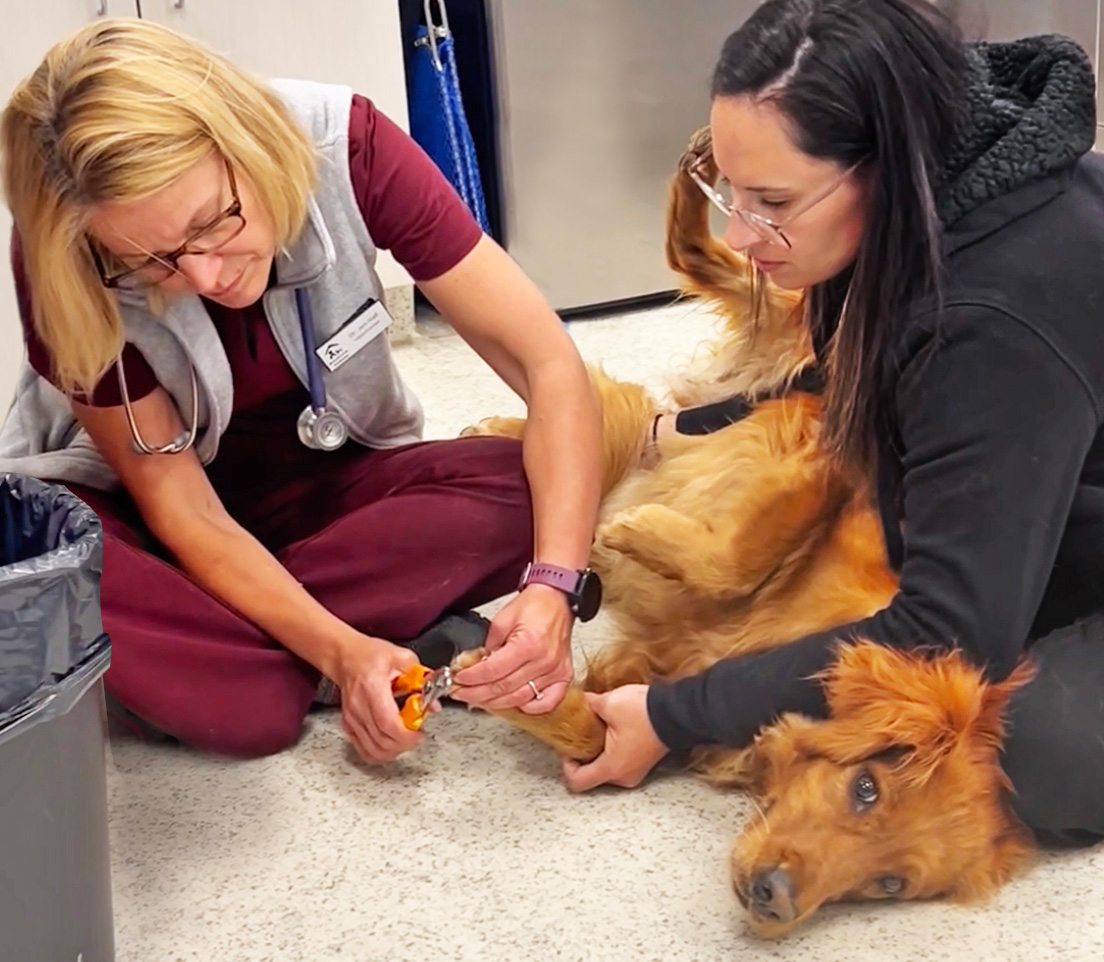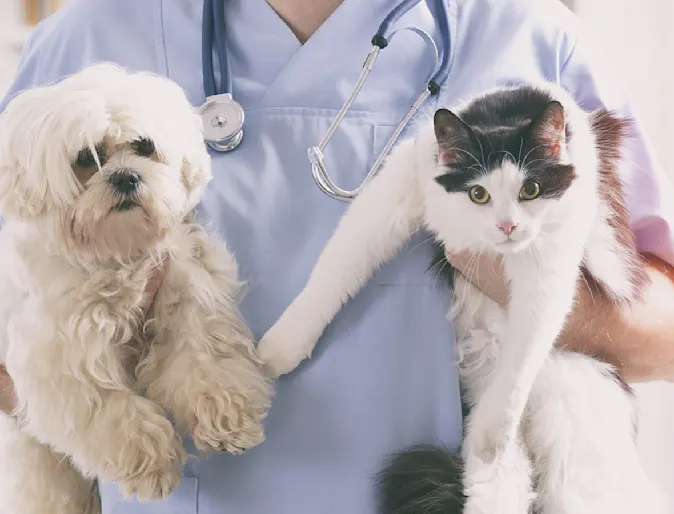Post-Op Recovery Guide After Your Dog’s tplo surgery
Post-Op Recovery Guide After Your Dog’s tplo surgery
Blog Article
Why Pet Rehab Is Crucial: the Benefits of Veterinarian Providers for Your Animal's Recuperation
Pet rehabilitation is an important part of recuperation for family pets facing injuries or handicaps. Vet services give crucial assistance through customized recovery strategies that resolve specific demands. These plans usually include discomfort monitoring, physical therapy, and nutritional guidance. Recognizing the numerous facets of pet rehabilitation can illuminate its relevance in enhancing recuperation end results. What details advantages do these services provide, and how can they change a pet dog's recovery journey?
Understanding Pet Rehabilitation
Animal rehab incorporates a range of therapeutic methods focused on restoring the health and capability of hurt or handicapped pets. This area incorporates various techniques, consisting of physical therapy, hydrotherapy, and occupational treatment, tailored to satisfy the specific requirements of each animal. Rehab professionals examine a pet's condition, establishing individualized therapy plans that may entail workouts to enhance muscles, improve wheelchair, and enhance total wellness. The process not just concentrates on physical healing however also addresses psychological and behavior elements. Pets commonly experience tension and anxiety adhering to an injury, making mental wellness factors to consider important in rehab. By developing a helpful environment, specialists can help pets reclaim their confidence and adjust to their brand-new conditions. Through regular sessions, animals can experience considerable renovations, ultimately resulting in a much better lifestyle. In general, recognizing pet recovery highlights its importance in advertising healing and improving the bond in between pets and their proprietors.
The Duty of Pain Administration in Recovery
How important works discomfort monitoring in the recovery of hurt pets? It plays an essential function in helping with healing and improving the overall health of animals. Correct discomfort monitoring not just reduces discomfort however additionally advertises wheelchair, enabling animals to get involved in rehab tasks necessary for recovery. When pain is effectively handled, animals often tend to react favorably to therapy, causing quicker recovery outcomes.Veterinarians utilize numerous methods to evaluate and address discomfort, including drugs, acupuncture, and alternative therapies. By tailoring pain management methods to the private requirements of each pet, veterinarians can ensure that family pets continue to be calm and participating throughout their healing journey. Minimizing pain helps reduce anxiety, which can hinder recovery and extend recuperation times. To sum up, efficient discomfort monitoring is crucial for enhancing the recuperation procedure and enhancing the quality of life for damaged animals.
Physical Treatment Techniques for Animals
Numerous physical treatment techniques are readily available to aid in the rehabilitation of family pets recuperating from injuries or surgical procedures (emergency vet). These methods can boost movement, relieve pain, and promote healing. Therapeutic exercises, for example, assistance reinforce muscular tissues and improve joint function, permitting pets to restore their physical capacities progressively. Manual therapy, that includes massage therapy and mobilization, can ease stress and improve circulation, adding to a quicker recovery.Other strategies such as easy series of activity workouts motivate joint flexibility and decrease tightness. In addition, electrical excitement treatment might be utilized to promote nerves and muscles, promoting recovery and pain relief.Veterinary experts often tailor these strategies per pet dog's particular needs, making sure a complete rehab strategy. By implementing these physical therapy approaches, pets can experience better lifestyle and a more effective recuperation from their conditions. The integration of these methods right into recovery programs is crucial for excellent healing end results
Advantages of Hydrotherapy for Recovery
Hydrotherapy offers considerable advantages in animal recovery, particularly in boosting wheelchair. This water-based therapy promotes discomfort alleviation while providing comfort to injured or recovering family pets. Additionally, it promotes strength-building workouts that add to overall physical healing.
Boosted Flexibility Renovation
As animals recuperate from injuries or surgical treatments, boosted mobility usually ends up being a primary objective of their rehabilitation. Hydrotherapy acts as a useful tool in achieving this goal. Via water-based exercises, animals can engage in low-impact motions that facilitate joint wheelchair and reinforce muscles without the stress of weight-bearing tasks. The buoyancy of water sustains their bodies, enabling increased series of movement and movement improvement. Additionally, hydrotherapy urges far better equilibrium and coordination, which are vital for restoring typical activity patterns. Routine sessions can result in considerable progression in a pet's physical abilities, inevitably enhancing their high quality of life. This strategy not only aids in recovery however additionally advertises a much more active and fulfilling way of life post-rehabilitation.
Pain Relief and Comfort

Relief from pain is a crucial element of animal recovery, and hydrotherapy significantly contributes to this process. By making use of water's buoyancy, hydrotherapy decreases joint anxiety and reduces pain throughout motion. This therapeutic strategy gives a soothing setting where animals can participate in gentle exercises without the full weight of their bodies affecting their recovery. The cozy water promotes blood circulation, promoting healing while likewise motivating relaxation. In addition, hydrotherapy sessions can be customized to fulfill the particular demands of the pet, making certain optimal convenience. As pets experience reduced discomfort and raised convenience levels, their total determination to participate in rehabilitation tasks typically boosts, resulting in a more efficient recovery trip. Hydrotherapy serves as a critical device in boosting discomfort alleviation and convenience during recovery.
Stamina Building Exercises
Strength-building workouts play a vital function in the recovery procedure, with hydrotherapy offering unique benefits. This type of therapy utilizes water resistance to boost muscular tissue strength without placing extreme strain on the joints. The buoyancy of water sustains the pet's weight, enabling safer movement and boosted series of motion. In addition, hydrotherapy can boost cardio health and promote overall physical fitness, aiding in much faster recuperation from injuries or surgical procedures. The regulated atmosphere also decreases the risk of reinjury, making it a perfect option for pets calling for recovery. Normal hydrotherapy sessions browse around this web-site can lead to recognizable renovations in flexibility, strength, and endurance, inevitably boosting the pet's lifestyle and capability to return to regular tasks.
Value of Customized Rehab Plans
Custom-made rehab plans are vital for resolving the unique demands of each pet, making sure individualized treatment techniques. These strategies enable efficient progress tracking and necessary adjustments, fostering ideal recuperation end results. Additionally, an alternative approach can enhance the total wellness of the animal, advertising a more thorough rehab experience.
Individualized Therapy Approaches
While many rehab programs embrace a one-size-fits-all approach, the distinct demands of each pet require personalized treatment plans for suitable recovery. Custom-made rehab plans take right into account different factors, consisting of the pet's species, age, medical history, and specific injuries or conditions. By customizing treatments, veterinarians can resolve each family pet's distinct challenges, maximizing the efficiency of the rehab process. Individualized plans may include different techniques such as physical treatment, hydrotherapy, and restorative workouts, guaranteeing that the therapy straightens with the pet's capacities and progression. Additionally, personalized strategies cultivate a stronger bond between the pet and the caregiver, advertising a more engaging and helpful healing setting. Inevitably, personalized treatment is vital for attaining best possible results in pet rehabilitation.
Progression Tracking and Adjustments

Holistic Recuperation Approaches
Holistic healing strategies are vital for reliable pet rehab, as they emphasize the value of customized treatment strategies tailored to each animal's certain needs. This strategy considers the physical, emotional, and ecological elements impacting healing. Personalized rehab plans may consist of a combination of physical treatment, nutritional counseling, and behavior modifications. By dealing with these diverse aspects, vets can improve the overall well-being of the pet and advertise a quicker recovery. In addition, such tailored approaches assist in a much deeper understanding of the pet dog's one-of-a-kind challenges, leading to much more efficient interventions. Inevitably, alternative recovery methods not only improve physical health yet likewise add to the pet's mental and emotional stability, making certain a detailed rehabilitation experience.
The Influence of Nutrition on Recuperation
Nourishment plays a crucial function in the healing process for refurbishing pets, often establishing the speed and performance of healing. A healthy diet regimen gives the needed nutrients that support cells repair work, increase the body immune system, and improve total vigor. Protein is especially important, as it aids in muscular tissue rebuilding and healing from injuries. Necessary fatty acids, vitamins, and minerals additionally add to minimizing swelling and advertising optimal cellular function.Veterinarians frequently emphasize the relevance of go to this web-site customized nutrition strategies, taking into consideration each animal's details demands, age, and wellness standing. Correct hydration is just as important, as fluids facilitate nutrient absorption and aid in cleansing. By making certain that animals receive ideal nourishment, caregivers can substantially boost their chances of an effective recuperation, bring about much better long-term health results. Inevitably, nourishment offers as a foundational element in the rehab trip, sustaining animals in gaining back toughness and resilience post-injury or illness.
Success Stories: Pet Dogs Who Grew After Recovery
Effective rehabilitation stories are plentiful, showcasing the strength of pets who have actually gotten over significant difficulties. Take, for example, Bella, a gold retriever who suffered serious injuries from an auto crash. With devoted vet care and a thorough rehab program, she reclaimed her flexibility and went back to her playful self, much to her owner's delight. Max, a senior cat detected with arthritis, experienced amazing renovation via a combination of physical therapy and pain monitoring. His newfound dexterity allowed him to appreciate his favorite sunbathing spots once again. One more inspiring instance is that of Coco, a saved greyhound that conquered stress and anxiety via behavior modification and socializing techniques, allowing her to grow in her brand-new home. These success tales exhibit the transformative power of animal rehabilitation, emphasizing that with the best assistance, family pets can not just recover however lead satisfying lives, enriching the bonds they show their households.
Often Asked Inquiries
How much time Does the Recovery Process Normally Consider Pet Dogs?
The rehabilitation procedure for family pets normally varies based upon the injury or condition, ranging from a couple of weeks to a number of months. Specific progress, therapy kind, and commitment to exercises greatly affect the total period of recovery.
Are There Any Threats Connected With Pet Recovery?
Animal recovery may carry threats such as worsening of injuries, here improper methods bring about pain, or inadequate surveillance throughout recovery. These aspects can impede development and impact the overall effectiveness of the recovery process.

Can All Pets Gain From Rehabilitation Services?
Not all pet dogs may require recovery, but lots of can benefit significantly. Rehabilitation services can boost mobility, ease pain, and enhance general health, specifically for those recouping from injuries, surgeries, or chronic problems.
Exactly How Can I Prepare My Pet for Rehabilitation Procedure?

What Indications Indicate My Pet Requirements Rehabilitation?
Indicators indicating a pet may need rehabilitation include difficulty walking, limping, decreased activity levels, reluctance to leap, or signs of discomfort. Observing these habits can motivate proprietors to look for professional evaluation and treatment for their animals.
Report this page